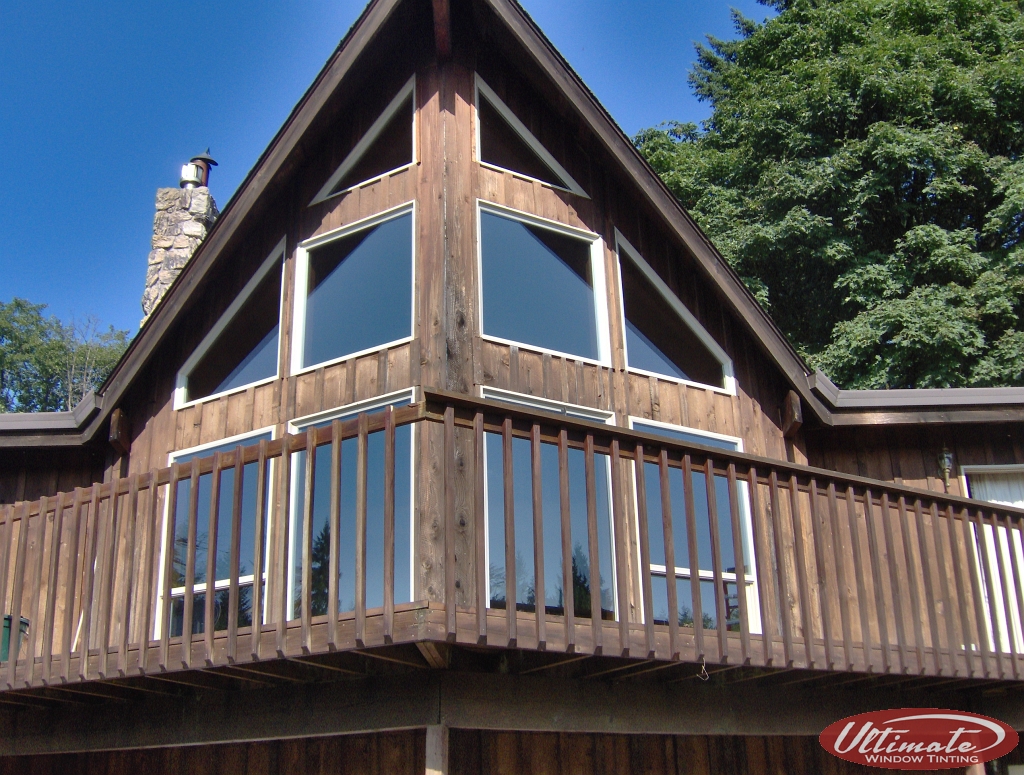Exactly How Residential Window Tinting Enhances Your Home's Power Performance
Residential window tinting offers a compelling solution for home owners seeking to boost power efficiency within their living spaces. By applying specialized movies to windows, it properly minimizes warm transfer, consequently supporting interior temperatures and minimizing the need for too much home heating or cooling.
Understanding Home Window Tinting
Comprehending window tinting is crucial for house owners seeking to boost both convenience and power efficiency in their living areas. Residential Window Tint. Window tinting involves the application of a thin film to the interior or outside surface area of glass home windows. This movie can considerably regulate the quantity of sunlight and heat that enters a home, hence influencing indoor environment problems
There are numerous types of window tinting films offered, each with unique buildings. The performance of window tinting is commonly determined by its Visible Light Transmission (VLT) portion, which shows just how much light can pass with the movie.
Advantages of Energy Performance
Home window tinting not just enhances aesthetics yet also plays a considerable role in improving energy efficiency within household rooms. By lowering heat transfer through windows, colored movies create an extra stable indoor environment, which can bring about substantial decreases in energy usage for heating & cooling. This power effectiveness converts right into lower energy expenses, offering home owners with significant long-lasting savings.

In addition, window tinting boosts the convenience of living areas. By lessening glow and blocking damaging UV rays, tinted windows develop an even more positive environment, which can cause boosted health for passengers. The protection against UV rays additionally aids maintain furniture and flooring from fading, contributing to the longevity of family items.
Exactly How Tinting Works
Tinting films operate through a mix of innovative materials and innovations created to manage the amount of solar power entering a home. Largely made up of polyester, these movies frequently incorporate ceramic or metal particles that soak up and show warm. This double ability allows them to considerably reduce the penetration of ultraviolet (UV) rays and infrared radiation while allowing noticeable light to travel through.
The efficiency of window tinting is measured by its solar heat gain coefficient (SHGC), which shows just how much solar power is transmitted through the home window. Lower SHGC values are preferable as they represent higher warm denial. In addition, window colors Web Site can include a variety of shades, allowing home owners to personalize their visual preferences while boosting power efficiency.
Furthermore, these movies act as a barrier, protecting against heat loss throughout chillier months by mirroring indoor warmth back right into the living space. This thermal insulation result complements the cooling advantages gained during warmer months, contributing to a well balanced interior environment year-round. By managing solar power successfully, household window tinting not only enhances convenience yet additionally plays a crucial duty in minimizing energy intake and decreasing utility bills.
Selecting the Right Color

There are various kinds of home window movies available, consisting of dyed, metalized, and ceramic. Dyed movies are economical but might have restricted longevity. Metalized films provide much better warm rejection but can conflict with electronic signals. Ceramic movies provide exceptional warmth control without compromising visibility and are extremely resilient, making them a preferred selection.
Visible light transmission (VLT) is one more essential aspect, as it suggests the quantity of all-natural light that can go through the colored glass. Property owners must pick a tint with a VLT that matches their illumination preferences while still supplying appropriate glow reduction.
Furthermore, assessing the solar heat gain coefficient (SHGC) can help identify exactly how well a color can obstruct heat from sunlight. A lower SHGC indicates better heat control, ultimately boosting power performance.
Installment and Maintenance Tips
Appropriate setup and maintenance are crucial components in making best use of the benefits of household home window tinting. Experts additionally use specialized methods and devices, which can improve Related Site the resilience and performance of the color.
Complying with installment, upkeep is necessary to prolong the life of the home window movie. It is recommended to wait a minimum of thirty day before cleaning up the colored home windows to allow the sticky to treat totally. When cleaning, make use of a soft cloth and a gentle, ammonia-free cleaner to stay clear of damaging the movie. Stay clear of abrasive products that can damage the surface.
Dealing with these problems quickly can prevent additional damage and preserve energy efficiency. By sticking to these installation and maintenance suggestions, homeowners can guarantee their home window tinting continues to offer considerable power savings and convenience for years to come.
Final Thought
Finally, domestic home window tinting acts as a reliable option for enhancing power performance within homes. By lowering heat transfer and obstructing unsafe UV rays, home window films add to reduce energy consumption and boosted indoor convenience. The choice of appropriate tinting products, along with correct setup and upkeep, additionally makes best use of these benefits. Ultimately, window tinting stands for a sustainable financial investment that not only decreases utility bills yet likewise advertises a comfortable living setting throughout the year.
Home window tinting involves the application of a thin movie to the inside or exterior surface area of glass home windows. By reducing heat transfer with home windows, colored films produce an extra secure indoor climate, which can lead to considerable reductions in power consumption for heating and cooling.The have a peek at these guys efficiency of home window tinting is determined by its solar warmth gain coefficient (SHGC), which indicates how much solar energy is transferred with the home window. By managing solar energy properly, residential window tinting not only enhances comfort yet also plays a vital role in decreasing energy consumption and lowering utility expenses.
By minimizing warmth transfer and obstructing unsafe UV rays, home window movies contribute to lower energy intake and improved interior comfort.